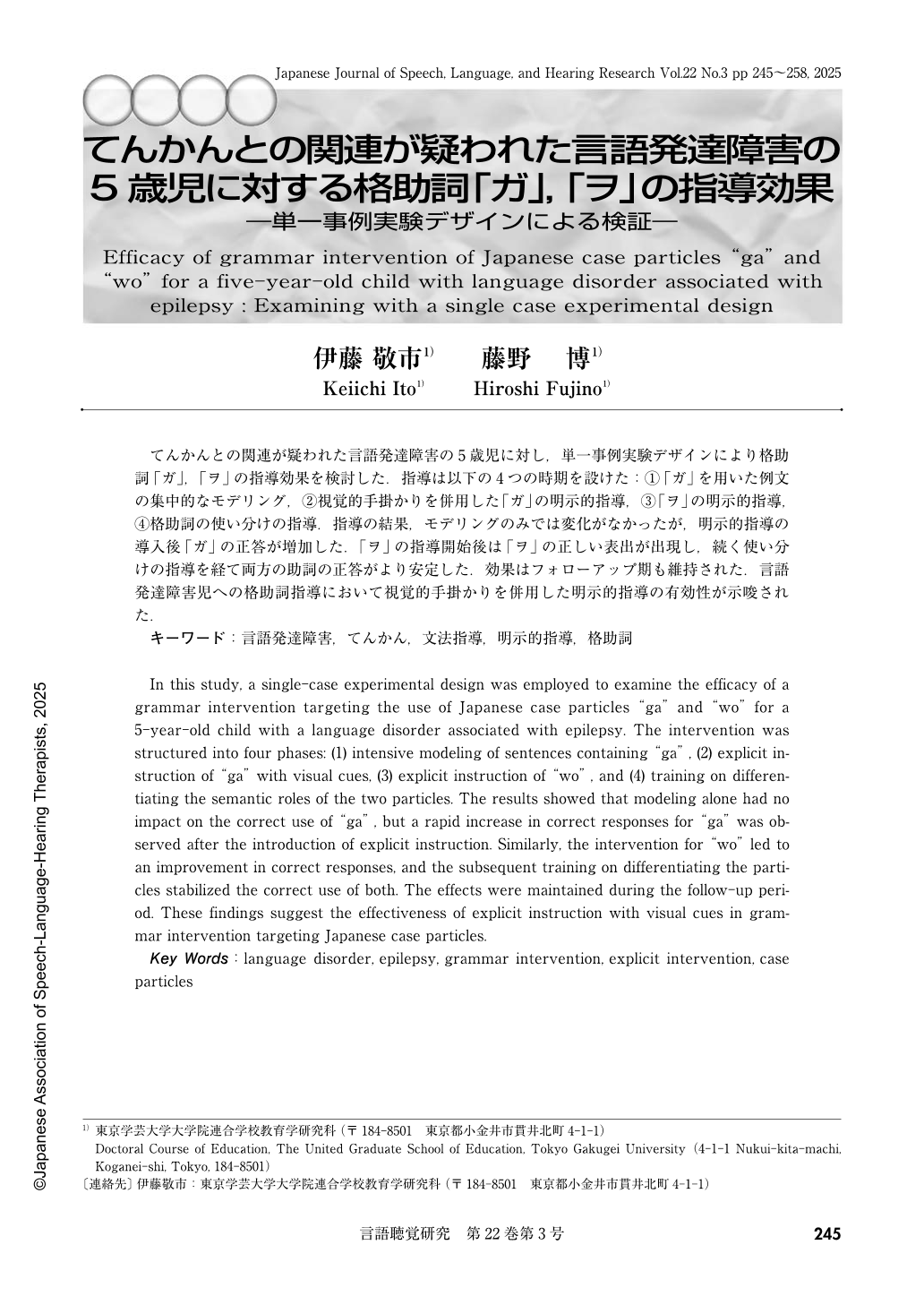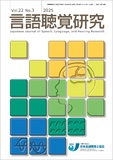Japanese
English
- 有料閲覧
- Abstract 文献概要
- 1ページ目 Look Inside
- 参考文献 Reference
てんかんとの関連が疑われた言語発達障害の5歳児に対し,単一事例実験デザインにより格助詞「ガ」,「ヲ」の指導効果を検討した.指導は以下の4つの時期を設けた:①「ガ」を用いた例文の集中的なモデリング,②視覚的手掛かりを併用した「ガ」の明示的指導,③「ヲ」の明示的指導,④格助詞の使い分けの指導.指導の結果,モデリングのみでは変化がなかったが,明示的指導の導入後「ガ」の正答が増加した.「ヲ」の指導開始後は「ヲ」の正しい表出が出現し,続く使い分けの指導を経て両方の助詞の正答がより安定した.効果はフォローアップ期も維持された.言語発達障害児への格助詞指導において視覚的手掛かりを併用した明示的指導の有効性が示唆された.
In this study, a single-case experimental design was employed to examine the efficacy of a grammar intervention targeting the use of Japanese case particles “ga” and “wo” for a 5-year-old child with a language disorder associated with epilepsy. The intervention was structured into four phases:(1) intensive modeling of sentences containing “ga”, (2) explicit instruction of “ga” with visual cues, (3) explicit instruction of “wo”, and (4) training on differentiating the semantic roles of the two particles. The results showed that modeling alone had no impact on the correct use of “ga”, but a rapid increase in correct responses for “ga” was observed after the introduction of explicit instruction. Similarly, the intervention for “wo” led to an improvement in correct responses, and the subsequent training on differentiating the particles stabilized the correct use of both. The effects were maintained during the follow-up period. These findings suggest the effectiveness of explicit instruction with visual cues in grammar intervention targeting Japanese case particles.

Copyright © 2025, Japanese Association of Speech-Language-Hearing Therapists. All rights reserved.


